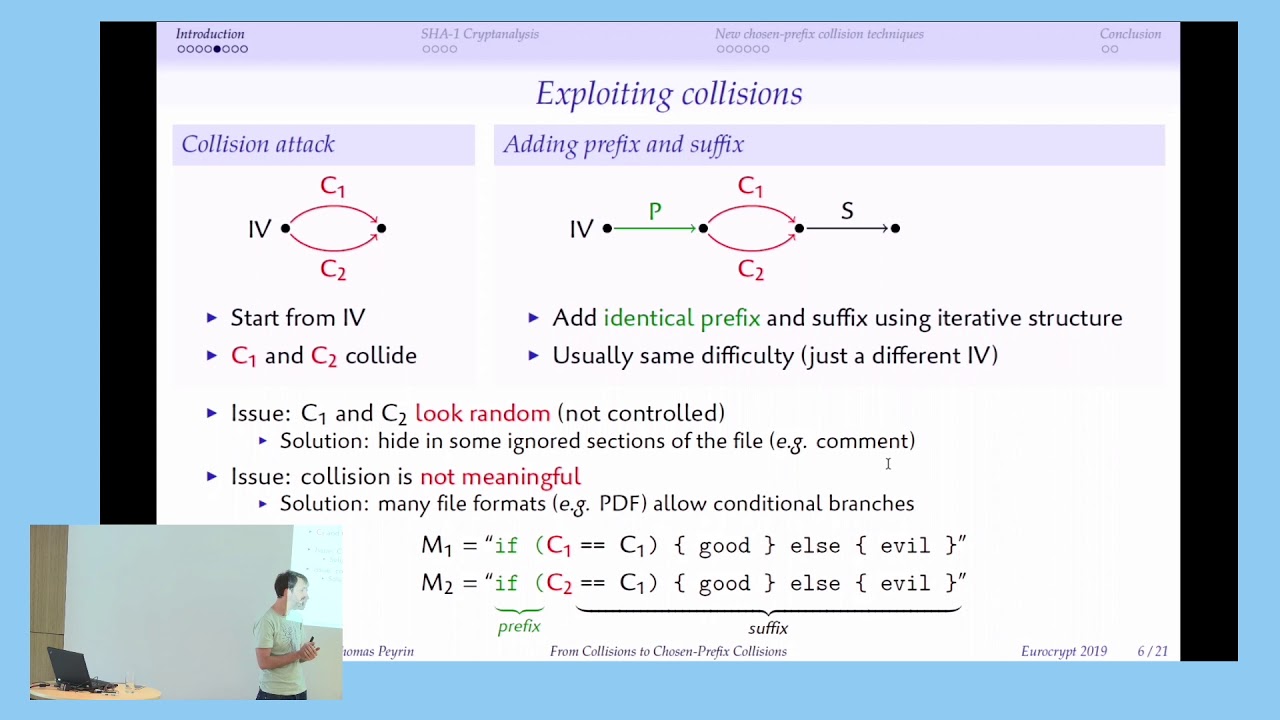Welcome to the resource topic for 2019/459
Title:
From Collisions to Chosen-Prefix Collisions - Application to Full SHA-1
Authors: Gaëtan Leurent, Thomas Peyrin
Abstract:A chosen-prefix collision attack is a stronger variant of a collision attack, where an arbitrary pair of challenge prefixes are turned into a collision. Chosen-prefix collisions are usually significantly harder to produce than (identical-prefix) collisions, but the practical impact of such an attack is much larger. While many cryptographic constructions rely on collision-resistance for their security proofs, collision attacks are hard to turn into a break of concrete protocols, because the adversary has limited control over the colliding messages. On the other hand, chosen-prefix collisions have been shown to break certificates (by creating a rogue CA) and many internet protocols (TLS, SSH, IPsec). In this article, we propose new techniques to turn collision attacks into chosen-prefix collision attacks. Our strategy is composed of two phases: first, a birthday search that aims at taking the random chaining variable difference (due to the chosen-prefix model) to a set of pre-defined target differences. Then, using a multi-block approach, carefully analysing the clustering effect, we map this new chaining variable difference to a colliding pair of states using techniques developed for collision attacks. We apply those techniques to MD5 and SHA1, and obtain improved attacks. In particular, we have a chosen-prefix collision attack against SHA1 with complexity between 2^{66.9} and 2^{69.4} (depending on assumptions about the cost of finding near-collision blocks), while the best-known attack has complexity 2^{77.1}. This is within a small factor of the complexity of the classical collision attack on SHA1 (estimated as 2^{64.7}). This represents yet another warning that industries and users have to move away from using SHA1 as soon as possible.
ePrint: https://eprint.iacr.org/2019/459
Talk: https://www.youtube.com/watch?v=Gh6p7Y74m9A
See all topics related to this paper.
Feel free to post resources that are related to this paper below.
Example resources include: implementations, explanation materials, talks, slides, links to previous discussions on other websites.
For more information, see the rules for Resource Topics .
